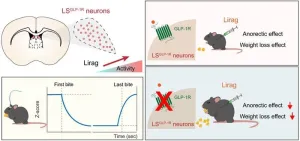(Press-News.org) A widely used disinfectant worldwide, chloroxylenol, has been associated with eco-toxicological threats in water environments due to its relatively high chemical stability and massive consumption. Researchers at the School of Engineering of the Hong Kong University of Science and Technology (HKUST) have discovered a promising alternative known as 2,6-dichlorobenzoquinone (2,6-DCQ), which works more effectively in combating certain common bacteria, fungi and viruses, and can be rapidly degraded and detoxified in receiving waters.
This groundbreaking study is led by Prof. ZHANG Xiangru from HKUST's Department of Civil and Environmental Engineering, who has been studying disinfection byproducts (DBPs) for many years. During the pandemic outbreak, Prof. Zhang noticed that chloroxylenol is structurally similar to some halo-phenolic DBPs previously discovered by his team, which have been shown to rapidly degrade by solar photolysis.
Inspired by the structural property and degradability of some halo-phenolic DBPs, the research team managed to select an effective broad-spectrum disinfectant from the DBPs that can be rapidly degraded and detoxified in receiving waters. The research team tested the efficacy of 10 different DBPs in inactivating various pathogens, including E. coli (a type of bacteria associated with colorectal cancer), Staphylococcus aureus (bacteria), Candida albicans (fungi), and bacteriophage MS2 (viruses). They found that 2,6-DCQ was 9 to 22 times more effective than chloroxylenol in inactivating these bacteria, fungi, and viruses.
Furthermore, they found that the developmental toxicity of 2,6-DCQ to marine polychaete embryos decreased quickly due to its rapid degradation via hydrolysis in receiving seawater, even in the absence of sunlight. Two days after being discharged into seawater, 2,6-DCQ exhibited 31 times lower developmental toxicity compared to chloroxylenol.
“We discovered that the selected DBP exhibited substantially stronger antimicrobial efficacy than chloroxylenol and that its concentration and associated developmental toxicity in receiving seawater decreased rapidly, even in darkness,” Prof. Zhang said.
He emphasized the pressing need for more effective and eco-friendly disinfectants, particularly in the wake of the COVID-19 pandemic. “Chloroxylenol has been frequently detected in aquatic environments; for instance, its concentration has reached up to 10.6 μg/L in river water in Hong Kong. Toxicological studies have reported adverse effects of chloroxylenol on aquatic organisms, including endocrine disruption, embryonic mortality, and malformations. Chronic exposure to chloroxylenol at environmental concentrations (~4.2 μg/L) can cause gene regulation and morphological changes in rainbow trout.”
The team's discovery of 2,6-DCQ as a promising alternative is an important step towards addressing this global need. The results suggest that 2,6-DCQ may be used as a disinfectant on a wide range of occasions, including personal care products (such as hand cleansers, detergent, and soap), paint, textiles, metal working fluids, medical scrubs, as well as sanitation for households, food processing equipment, surgical instruments, and public places.
“This innovative study not only provides a potential solution to better support human biosecurity while prioritizing environmental sustainability, but also carries significant implications for the development of green disinfectants and other green industrial products by exploiting the slightly alkaline nature of seawater. For example, scientists may design and develop other industrial products such as pesticides, pharmaceuticals, and personal care products that can be rapidly degraded by hydrolysis in receiving seawater,” Prof. Zhang elaborated.
Their findings have been published in the first-rate multidisciplinary journal Nature Communications. The research team included Dr. HAN Jiarui, currently a Research Assistant Professor at HKUST, and Dr. LI Wanxin, currently an Assistant Professor at Xi'an Jiaotong-Liverpool University. They are both PhD graduates from HKUST's Department of Civil and Environmental Engineering and were postdoctoral fellows in Prof. Zhang’s group during the study.
Looking ahead, Prof. Zhang plans to explore the relationships between disinfection efficiency and degradability of halophenols with their molecular fingerprints through machine learning. He hopes future investigations will shed light on the further development of optimal disinfectants.
END
HKUST engineering researchers discover an effective and environment-friendly disinfectant
2024-09-06
ELSE PRESS RELEASES FROM THIS DATE:
Excessive light pollution may increase risk of Alzheimer's, especially in younger people
2024-09-06
In some places around the globe, the lights never go off. Streetlights, roadway lighting, and illuminated signs can deter crime, make roads safer, and enhance landscaping. Undisrupted light, however, comes with ecological, behavioral, and health consequences.
In the US, some states have legislation in place to reduce light pollution; however, levels of light at night remain high in many parts of the country. Now, researchers there have investigated correlations between outside nightly light pollution and Alzheimer's disease (AD).
“We show that in the US there is a positive ...
Researchers reveal new central action target of the “weight loss miracle drug” GLP-1R agonists in mice
2024-09-06
A research group led by Prof. ZHU Yingjie from the Shenzhen Institute of Advanced Technology (SIAT) of the Chinese Academy of Sciences (CAS), has revealed the essential role of lateral septum (LS) neurons in mediating anorectic and weight-lowering effects of the anti-obesity drug— liraglutide in mice.
The study was published in the Journal of Clinical Investigation on Sep. 03.
Obesity is now among the top ten chronic diseases worldwide, causing a range of health issues and increasing the medical burden. Anti-obesity medications have shown greater efficacy than lifestyle changes and diet, with lower risks and fewer side effects ...
Youth igniting the flame of innovation: The third SynBio challenges held successfully in Shenzhen
2024-09-06
From August 7 to 10, the Third SynBio Challenges were held at the Guangming Tianan Cloud Park International Conference Center in Shenzhen, China.
The event was co-organized by Shenzhen Institute of Advanced Technology (SIAT) of the Chinese Academy of Sciences (CAS), Chinese Society of Biotechnology, Shenzhen University of Advanced Technology (SUAT), Shenzhen Institute of Synthetic Biology (iSynBio), Shenzhen Synthetic Biology Association, and the Shenzhen Industrial Innovation Center for Engineering Biology.
The SynBio Challenges aim to provide a platform for students to engage in exchange and competition within the synthetic biology ...
Broccoli and kale top the shopping list for lowering blood pressure
2024-09-06
Cruciferous vegetables, including broccoli, cabbage, kale, and cauliflower have been found to lower blood pressure, in comparison to root and squash vegetables, in middle-aged and older Australian adults with elevated blood pressure.
In a randomised, controlled, crossover trial, researchers from Edith Cowan University (ECU) found that consuming four serves a day of cruciferous vegetables resulted in a significant reduction in blood pressure, compared with four serves a day of root and squash vegetables including carrot, potato, sweet ...
Multi-user reinforcement learning based task migration in mobile edge computing
2024-09-06
Dynamic service migration is a key technology in Mobile Edge Computing(MEC). In a multi-user service migration scenario, the states of all users are combined into a global state, which leads to the instability of the system and ignores the influence of multiple users. It is more and more challenging to design an effective migration strategy to balance migration costs and latency in a multi-user distributed environment.
To solve the problems, a research team led by Degan ZHANG published their new research on 15 August 2024 in Frontiers of Computer Science co-published by Higher Education Press and Springer Nature.
Considering ...
Researchers develop mechanism that predicts severity of aggressive form of breast cancer
2024-09-06
Scientists at Huntsman Cancer Institute at the University of Utah (the U), the National Cancer Institute-designated cancer center for the Mountain West, have made a significant breakthrough in predicting the prognosis of triple-negative breast cancer (TNBC), a particularly aggressive disease. Their research, published in JCO Precision Oncology as part of the TOWARDS study, has led to the development of a new mechanism that accurately forecasts the aggressiveness of TNBC. This advancement could revolutionize the way doctors treat TNBC, allowing them to identify higher-risk patients and tailor precise treatments.
Currently, TNBC lacks reliable methods to predict recurrence after ...
Research vessel Resilience charts course to the future of marine research
2024-09-06
SEQUIM, Wash.—Officials gathered at the Sequim campus of the Department of Energy’s Pacific Northwest National Laboratory today to dedicate DOE’s first hybrid-electric research vessel, RV Resilience.
The event marks the start of a new era of marine energy research at PNNL-Sequim, part of DOE’s Office of Science national laboratory system and Resilience’s new home port. Speakers at the dedication included U.S. Sen. Maria Cantwell, U.S. Rep. Derek Kilmer, Washington State Rep. Steve Tharinger and representatives from DOE and PNNL.
“DOE is focused on ...
Mayo Clinic study finds dysfunctional white blood cells linked to heightened melanoma risk
2024-09-06
ROCHESTER, Minn. — About 8 to 10 million Americans over age 40 have an overabundance of cloned white blood cells, or lymphocytes, that hamper their immune systems. Although many who have this condition — called monoclonal B-cell lymphocytosis (MBL) — do not experience any symptoms, a new study shows they may have an elevated risk for several health complications, including melanoma, a form of skin cancer. The findings, by Mayo Clinic researchers, are published in a new paper in the Journal ...
100x improvement in sight seen after gene therapy trial
2024-09-06
PHILADELPHIA— The vision of people with a rare inherited condition that causes them to lose much of their sight early in childhood was 100 times better after they received gene therapy to address the genetic mutation causing it. Some patients even experienced a 10,000-fold improvement in their vision after receiving the highest dose of the therapy, according to researchers from the Perelman School of Medicine at the University of Pennsylvania who co-led the clinical trial published in The Lancet.
“That 10,000-fold improvement ...
Gene therapy restores vision in first-ever trial for rare, inherited blindness
2024-09-06
After the treatment, one patient saw her first star. Another saw snowflakes for the first time. Other patients were newly able to navigate outside of the home or to read the labels on their child’s Halloween candy.
The cause of these seemingly miraculous improvements? A gene therapy developed by University of Florida scientists, which restored useful vision to most patients with the rare, inherited blindness known as Leber congenital amaurosis type I, or LCA1, in a small trial.
Those who received the highest dose of the gene therapy saw up to a 10,000-fold improvement ...






